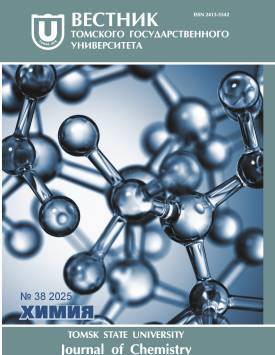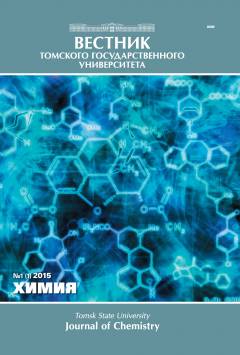Synthesis, antiaggregation and anticoagulation properties of some 1-benzylisatin derivatives
A series of 1-benzylisatins was obtained in high yields by alkylation of sodium isatin with various halogen-containing benzyl halides. The convenience of this approach lies in the absence of the need for intermediate isolation of the sodium salt and the efficiency of using both chloro- and bromomethylbenzenes. It was shown that the use of benzyl bromides is more advantageous from the point of view of increasing the yield of the target compounds. The structure of the new isatin derivatives was unambiguously proven by IR spectroscopy and 1H and 13C NMR, the composition - by mass spectrometry and elemental analysis. An interesting feature of the ESI spectra recorded in the positive mode is the presence of peaks corresponding to the masses of protonated isatin molecules. When studying the effects of compounds (3-7) on the hemostasis system, it was found that the median antiaggregation activity values of a number of new halogen-containing 1-benzylisatins were 17.8%, 14.3%, 15.4%, 14.1%, and 11.3% (p<0.05 for all values) relative to the control, which corresponds to the values of acetylsalicylic acid. At the same time, compounds 3, 4, 6, and 7 were more effective than the comparison drug in prolonging the latent period by 11.8%, 10.5%, 4.3%, and 26.5% (p<0.05 for all values), respectively, which may probably indicate a broader antithrombotic potential of these compounds. When evaluating the anticoagulant activity, it was found that the entire series of 1 -benzylisatins under study (3-7) exhibited varying degrees of influence on the coagulation component of hemostasis, which consisted of prolongation of the activated partial thromboplastin time. It was shown that the effect of new compounds on the hemostatic system depended on the nature of the halogen in the benzyl fragment. The most active compound in relation to the hemostatic system, 1-(2-chlorobenzyl)indoline-2,3-dione, contained a 2-chlorobenzyl substituent (3); introduction of an additional chlorine atom at position 4 (compound (5)) or fluorine at positions 4 and 6 (compounds (4, 6, 7)) resulted in a slight decrease in antiaggregation and anticoagulant activity. Contribution of the authors: the authors contributed equally to this article. The authors declare no conflicts of interests.
Keywords
isatin, alkylation, antiaggregation activity, anticoagulant activityAuthors
| Name | Organization | |
| Bogdanov Andrei V. | Kazan (Volga region) federal university | abogdanov@inbox.ru |
| Melnikova Alevtina Ya. | Razumovsky Moscow State University of Technologies and Management | may22.03@yandex.ru |
| Ponomarev Evgeny E. | Razumovsky Moscow State University of Technologies and Management | eponomarev@mfmgutu.ru |
| Valiullina Zulfiya A. | Bashkir State Medical University | z_suleimanova@mail.ru |
| Samorodov Aleksandr V. | Ufa Law Institute of the Ministry of Internal Affairs of Russia | AVSamorodov@gmail.com |
References

Synthesis, antiaggregation and anticoagulation properties of some 1-benzylisatin derivatives | Vestnik Tomskogo gosudarstvennogo universiteta. Chimia – Tomsk State University Journal of Chemistry. 2025. № 38. DOI: 10.17223/24135542/38/7
